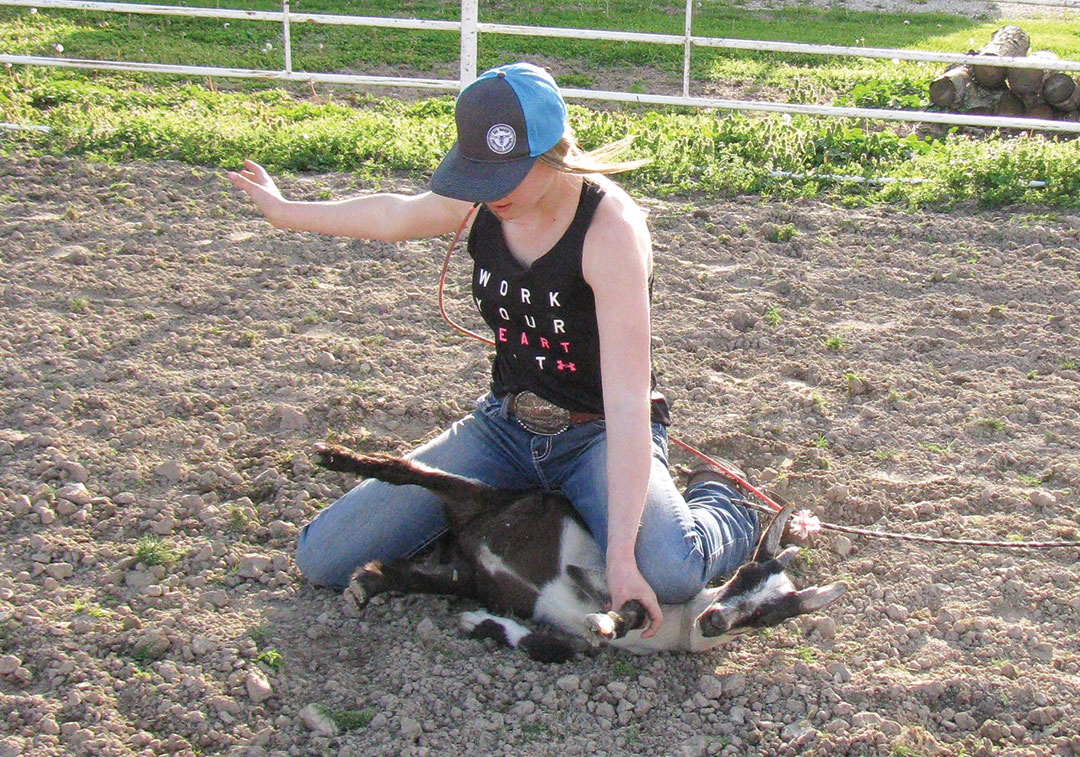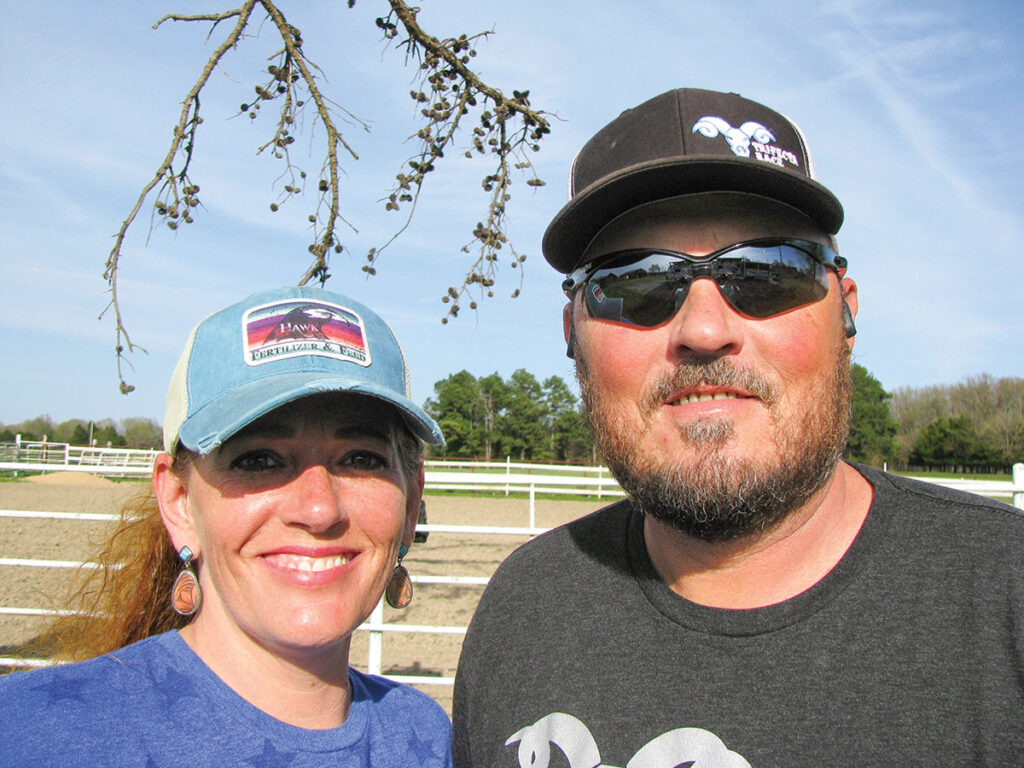
Clint and Cassie Lininger began Rafter C Rodeo Goats in 2012
MARSHFIELD, MO. – On a 40-acre farm in Webster County, near Marshfield, Mo., Clint and Cassie Lininger are raising goats. But not just any goats. They breed, raise, and train rodeo goats. Currently they have 76 goats, including all the goat kids recently born.
Rafter C Rodeo Goats was established in 2012.
“My son was competing at a Missouri Family Rodeo Association (MFRA) and halfway through the year the contractor who brought the goats to the rodeos wanted out of his contract,” Cassie explained.
She had a couple of goats at the time, but they were more like pets.
“I was approached and asked if I wanted to do this,” she recalled. “I said, “I don’t have enough goats. Let me think about it and figure it out.”
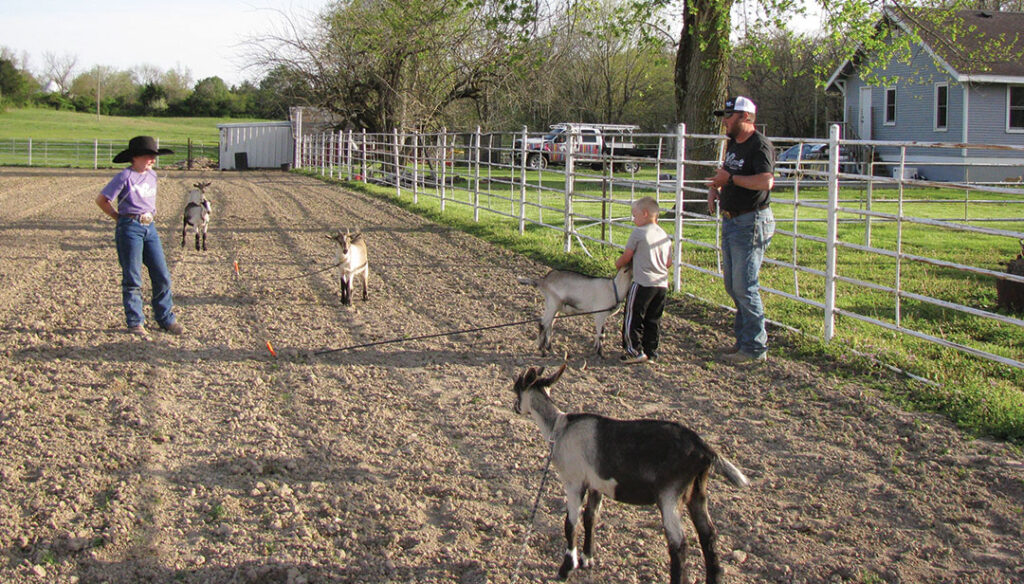
That’s how it all began for Rafter C Rodeo Goats.
“There was a need in the association and I went and got some goats the right size and we got through the rest of the season,” Cassie said.
The next year she was asked if she was going to put in a bid for the goats and she decided to.
“It just grew. It was filling a need. Then we started having practices and giving lessons. It has evolved since then,” Cassie stated.
The goats they use are all crossbreeds.
“For goat tying, you don’t want to go with all-meat breed, which would be Boer or Kiko, because they get heavy too quick. The dairy goats stay lighter. They don’t have as much muscle tone, but they get real tall real quick. So it’s hard for the kids to flank when it’s like that. So everything we have is crossbred,” Cassie explained.
One of their main billies is half Boer and half LaMancha, and the other one is half Nubian and half Kiko.
“Everything we have is a half or a quarter; meat versus dairy. So they have that medium build,” she said. “They don’t get too heavy too quick and they don’t get too tall too quick, because goats grow fast.”
The gestation period for a goat is five months. Clint and Cassie try to kid their goats during the winter so their babies are ready to wean and get started when the rodeo season starts.
“We try to have kids born at the end of November and beginning of December,” Cassie said. “It makes for a little more work. You have to keep them indoors, and we have heater barrels. It takes more work, but that way they’re the perfect age to start the season with.”
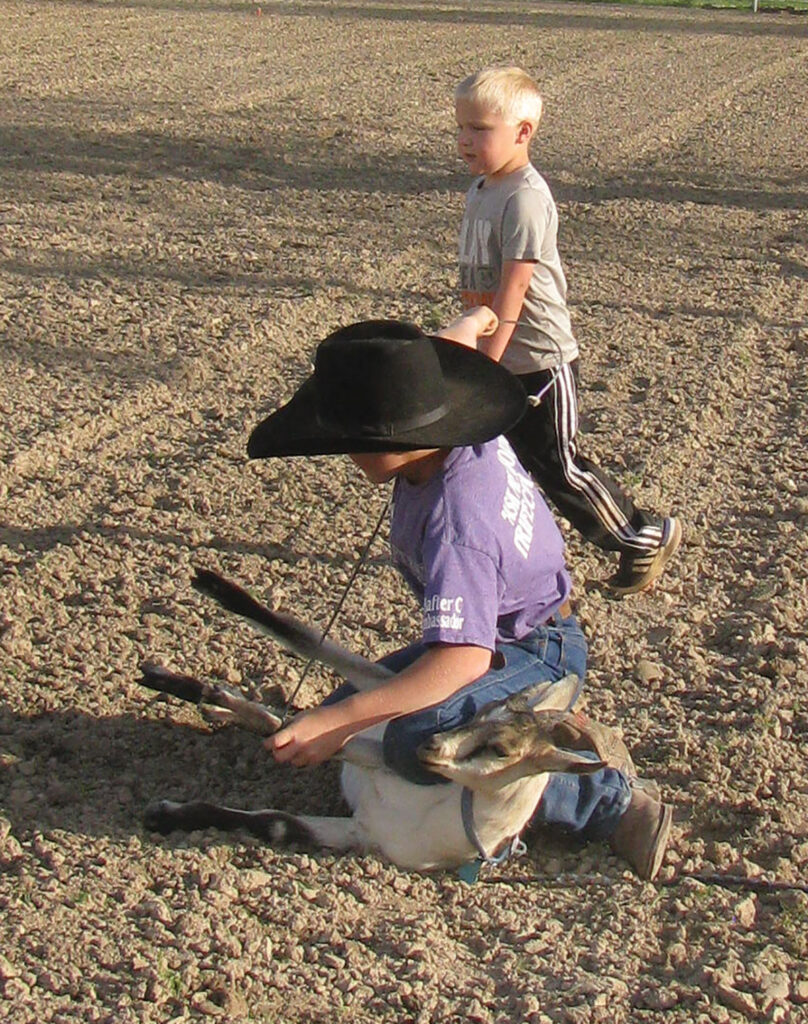
Kids are weaned at 10 to 12 weeks old. At about 4 to 6 months, the goats are used for the rodeo. Size helps decide which goats to use. Goats that haven’t been tied and don’t know the job, Cassie and Clint refer to as “freshies.” Practice pens help them decide which ones to use. They let the kids tie them.
“We tell them this one and this one are fresh. Tie them. Take your time on them and tell us what you think. That way we can watch, because some of them (the goats) will be more skittish,” Cassie said. “It’s scary to the goats the first couple of times. They’re smart and they know and learn a routine.”
Clint and Cassie listen to the kids.
“You may have a goat that’s right on the bubble of being in the next age bracket. If the little kids say, ‘This one’s too strong,’ and we see it’s too strong, we will pull them and move them to an older age bracket,” Clint explained.
As far as weight and temperament, Clint and Cassie strive to give the rodeo participants an even chance. It helps to encourage the youngsters and keep them interested.
“If they feel super-discouraged right off the bat, they’re not going to stick with it,” Cassie said.
It is important to have goats for all ages because there are different age divisions for the kids, from young tail-tier kids to college kids.
“We’ve had as young as 3-year-old kids do it, assisted by their mother or older brother or sister,” Clint explained.
They take their goats to rodeos all over Southwest Missouri.
“All of our stuff is usually at Longhorn Arena in Mount Vernon, Mo.,” Cassie stated.
On average, they take about 20 goats to a rodeo. They know in advance how many and what size is needed. When the goats outgrow rodeo use, the Liningers keep the females.
“Once they get above 55 to 60 pounds, they’re done. So they go to the breeder pen,” Cassie explained.
If they don’t like the goats personality, and they’re female, they will sell them.
“Bad personality means bad momma,” Cassie explained. Otherwise, does goats stay on the farm for the remainder of their lives. They sell the bucks they don’t want to work into their breeding program.
The general rodeo association year starts around March and runs through October.
“When our association stuff wraps up for the year, that’s when our personal production stuff starts. We do a winter series and we’ll do it from the beginning of November until the first week of February,” Cassie stated.
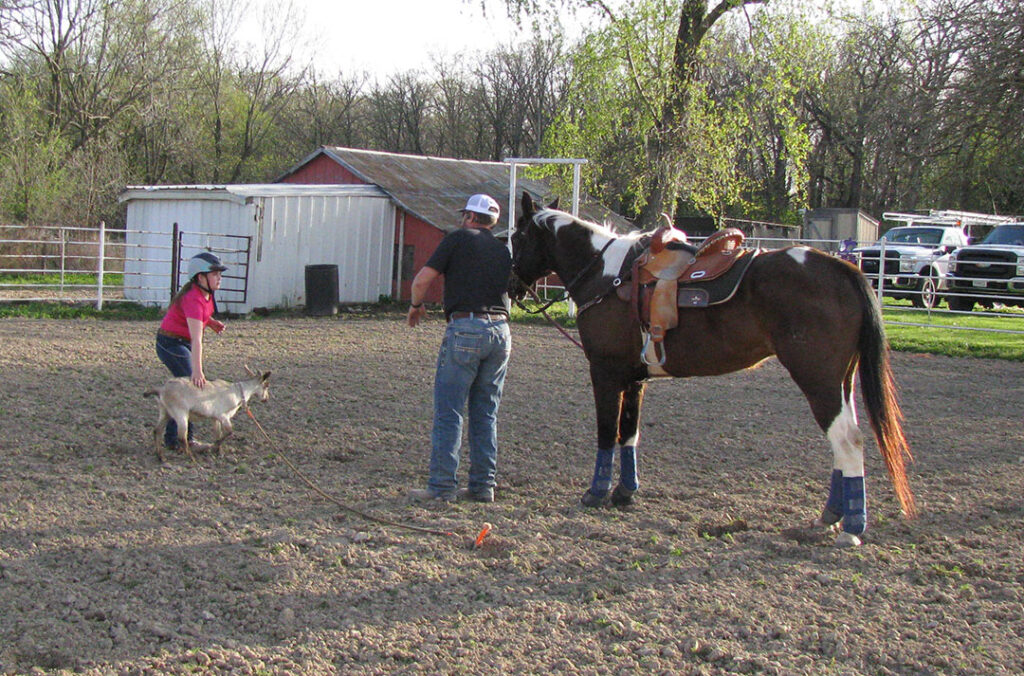
Practice nights are usually held on Thursday. During the summer it is held at their farm.
“During the winter, we don’t do it every week. It is once or twice a month, because you have to pay to be at an indoor barn,” Cassie explained. Those practices are held in Mount Vernon or Brookline, Mo.
Clint and Cassie have two big productions. In October, they hold a two-day Trifecta Race and give away a horse trailer at the end. They do a winter series, Win a D Win a Key, which is 14 dates, and give away a horse trailer at the end of that.

